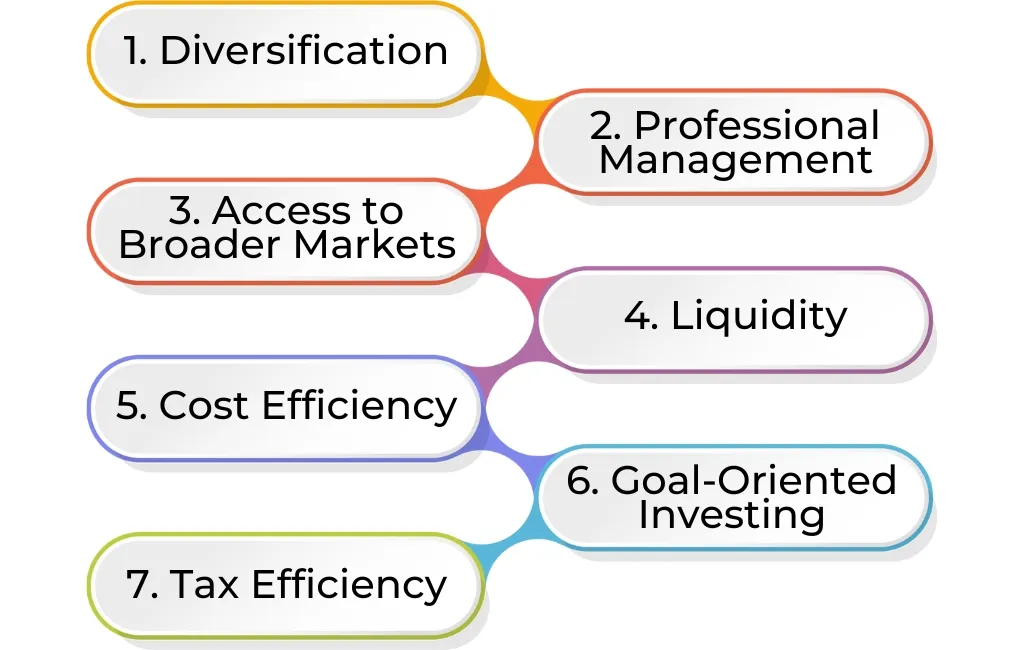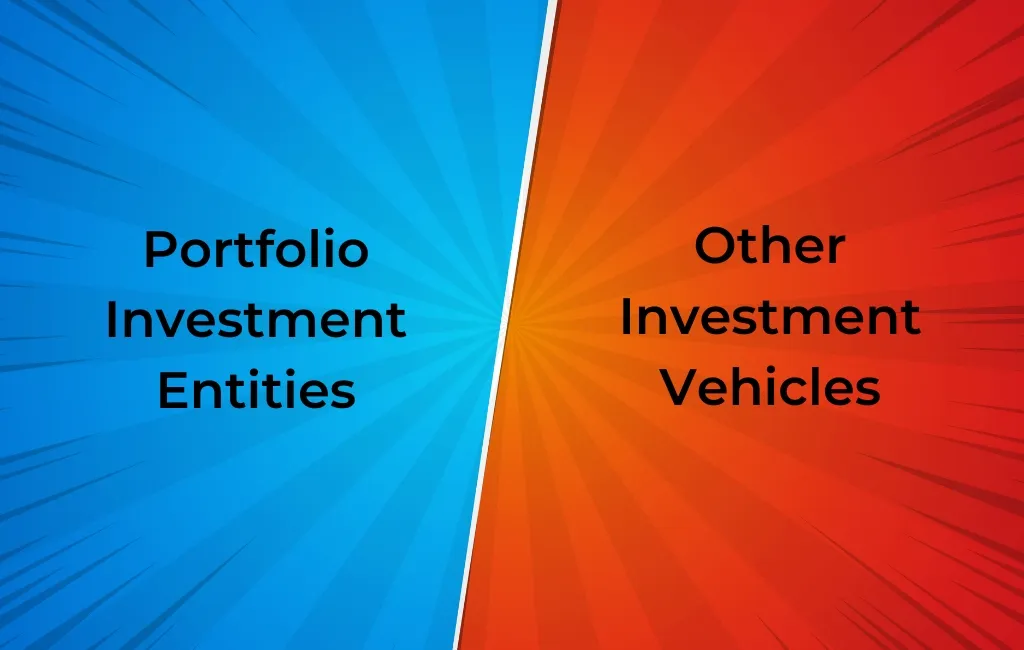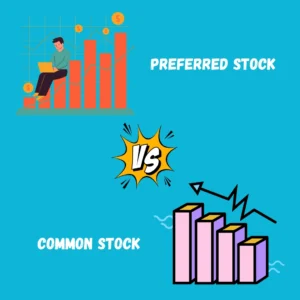Investing is the backbone of financial growth for both individuals and businesses. One term that may come up for those looking to diversify their investment options is the Portfolio Investment Entity (PIE). So, the natural question arises – What is a Portfolio Investment Entity?
A Portfolio Investment Entity, commonly abbreviated as PIE, refers to a type of investment entity in certain jurisdictions that offers tax benefits for individual investors. These entities often pool investors’ money and place them in diverse assets, spreading the risk and potential reward.

What is a Portfolio Investment Entity (PIE)?
A portfolio investment entity is a financial mechanism or institution that oversees a broad range of assets for its stakeholders. This institution collects resources from several investors and channels them into diverse investment tools such as equities, fixed-income securities, mutual funds, ETFs, and other market instruments. The primary objective of a portfolio investment entity is to strike a harmony between potential risks and rewards by distributing investments among various sectors and asset categories.
This approach aids in lessening the collective risk by ensuring investment variety and risk distribution. Moreover, the entity capitalizes on bulk operations to decrease fees and tax liabilities. Furthermore, it grants investors access to expert management, letting them leverage the knowledge of seasoned professionals.
Importance of Understanding Portfolio Investment Entities
Grasping the intricacies of Portfolio Investment Entities (PIEs) is vital for a myriad of reasons, primarily due to the financial benefits and potential risks associated with them. One of the most compelling reasons to understand PIEs is the distinct tax advantages they offer.
In some jurisdictions, the tax rate applied to a PIE might be considerably lower than an individual’s regular tax rate. This can lead to tangible tax savings, enhancing overall investment returns. Moreover, as tax laws and regulations can be intricate and occasionally shifting, having a solid understanding of how PIEs fit within these frameworks is critical.
PIEs inherently provide diversification, a foundational principle of investment. By pooling funds from numerous investors and spreading them across varied assets, PIEs can mitigate the potential negative impact of a single underperforming asset on the overall portfolio. Thus, knowing how these entities function can help investors appreciate the risk-reduction strategies, enabling them to make more informed decisions about their investment mix.
The world of investment is vast, with many vehicles and options available. By understanding the unique benefits and potential drawbacks of PIEs, investors can better evaluate their suitability against other investment avenues. This comprehensive perspective ensures that investors are not just following trends or buzzwords but making choices rooted in knowledge and aligned with their financial goals.

Understanding Portfolio Investment Entities
In the vast landscape of investment vehicles, Portfolio Investment Entities (PIEs) are a compelling choice for many investors. But what makes them so special? From their inherent diversification to their transparency, PIEs provide a unique blend of advantages catering to novice and seasoned investors. Before delving deep into the world of PIEs, it’s essential to understand the foundational concepts that drive their appeal.
Diversification: One of the cornerstone advantages of Portfolio Investment Entities (PIEs) is their diversification. In the context of investment, diversification refers to the spreading out of investments across various asset types and sectors. By pooling funds from various investors and allocating them to a broad spectrum of assets, PIEs can effectively minimize the risk associated with individual investments. In essence, if one investment underperforms, its negative impact on the overall portfolio is cushioned by the performance of other assets.
Professional Management: PIEs provide investors access to professional fund managers with expertise in selecting, managing, and rebalancing the portfolio. These professionals have in-depth market knowledge, research capabilities, and analytical tools that the average individual investor might not possess. As a result, investors can potentially benefit from higher returns and more strategic investment decisions than they might achieve on their own.

Investor Participation: While professionals manage PIEs, they often allow for a degree of investor participation. This can range from choosing between different fund strategies, setting risk tolerance levels, or voting on certain fund matters. Such participation ensures investors have a voice and can align their investments with individual preferences and goals.
Liquidity: Many PIEs, especially those traded on major exchanges, offer good liquidity. This means that investors can easily convert their investments into cash by selling their shares or redeeming them with the fund. This feature is especially valuable for investors needing to access their funds on short notice.
Regulation: PIEs are typically subject to regulatory oversight in their respective jurisdictions. This ensures that they operate with transparency and in the best interests of their investors. Regulatory bodies set standards for disclosure, reporting, and fair practices, which provides an added layer of protection and confidence for investors.
Types of Portfolio Investment Entities
Understanding the types of Portfolio Investment Entities and their unique characteristics can empower investors to make informed choices. Each PIE caters to different investment goals and risk appetites.
Before committing capital, thorough research and, if possible, consultation with financial advisors are recommended to ensure alignment with individual financial objectives.
Mutual Funds
Mutual funds are perhaps the most well-known type of PIE. They pool money from several investors to invest in a diversified portfolio that includes stocks, bonds, or other securities. The fund is managed by professional managers who make investment decisions based on the fund’s strategy and objectives.
Investing in mutual funds offers diversification, as each fund holds a variety of investments. This spread reduces the risk of any investment’s poor performance severely impacting the overall portfolio. Moreover, mutual funds provide liquidity, with investors being able to buy or sell their shares directly through the fund, typically at the end of the trading day based on the fund’s net asset value (NAV).
Exchange-Traded Funds (ETFs)
Exchange-Traded Funds, commonly known as ETFs, resemble mutual funds in that they represent a collection of securities. However, unlike mutual funds, ETFs are traded on stock exchanges like individual stocks. This allows investors to buy and sell their holdings throughout the trading day at fluctuating market prices.
One of the main advantages of ETFs is their cost-efficiency. They typically have lower expense ratios than mutual funds. Additionally, because of their “in-kind” creation and redemption process, ETFs can offer tax efficiencies that can benefit investors. Their transparency is another key highlight; ETFs usually disclose their holdings daily.
Hedge Funds
Hedge funds are private investment funds that employ various strategies to achieve high returns for their investors. Unlike mutual funds and ETFs, hedge funds aim to match or slightly outperform the market and deliver substantial returns, regardless of market conditions.
However, with potentially high returns comes higher risk. Hedge funds might invest in riskier assets or use leverage to amplify their returns, which can also magnify losses. Moreover, they’re typically less regulated than mutual funds and ETFs, leading to less transparency. It’s worth noting that hedge funds are usually accessible only to accredited or institutional investors, given their risk profile and higher investment minimums.

Unit Trusts
Unit trusts pool funds from individual investors to invest in a portfolio of assets professional fund managers manage. Each investor’s stake in the trust is represented by “units,” and the value of these units fluctuates based on the underlying portfolio’s performance.
The flexibility of unit trusts is one of their primary draws. Investors can typically add to their investment or sell their units anytime. Furthermore, unit trusts provide a structured way for individual investors to access a diversified portfolio, which might otherwise be out of reach due to capital constraints or lack of expertise.
Investment Trusts
Investment trusts are a closed-end fund, meaning they issue a fixed number of shares that are traded on the stock exchange, similar to company shares. They are structured as incorporated companies with a board of directors responsible for safeguarding shareholders’ interests.
One distinctive feature of investment trusts is their ability to borrow or leverage money to buy more assets, potentially boosting returns. However, this also increases the risk. Furthermore, the price of an investment trust’s shares might deviate from the net asset value of its underlying portfolio, leading to shares trading at a discount or premium. This dynamic offers both opportunities and risks for investors.
Purpose of Investments in Financial Markets

Investing in Portfolio Investment Entities (PIEs) offers investors a structured and strategic avenue to access the financial markets. While the specific purposes can vary depending on individual goals and the type of PIE, several overarching reasons can be identified that resonate with a broad spectrum of investors.
1. Diversification
One of the fundamental reasons investors are drawn to PIEs is their inherent diversification. By pooling funds from multiple investors and spreading these funds across a range of assets, such as stocks, bonds, and other securities, PIEs mitigate the risk associated with any single asset or market sector. This diversified approach is especially beneficial for investors who may not have the capital or expertise to create a diversified portfolio on their own.
2. Professional Management
Many investors may not have the time, expertise, or resources to manage their investments actively. PIEs, such as mutual and hedge funds, are managed by professional fund managers with deep market insights and expertise. This allows investors to leverage the skills of professionals while freeing them from the day-to-day decision-making process.
3. Access to Broader Markets
PIEs offer an avenue for individual investors to tap into markets or asset classes that might otherwise be inaccessible. For instance, certain global markets, niche sectors, or alternative assets might be challenging to access for an individual but can be included in a PIE’s portfolio.
4. Liquidity
Many PIEs, especially those like mutual funds and ETFs, offer high liquidity. Investors can easily redeem or sell their holdings, ensuring that they have the flexibility to access their capital when needed.
5. Cost Efficiency
Due to the pooling of funds and the scale of operations, many PIEs can achieve economies of scale. This can lead to lower transaction costs and management fees, making them a cost-effective solution for many investors.
6. Goal-Oriented Investing
Whether saving for retirement, purchasing a home, or building wealth, PIEs often cater to specific investment goals. They can provide tailored solutions, such as income, growth, or retirement-targeted funds, aligning with an investor’s objectives.
7. Tax Efficiency
Some PIEs are structured to offer tax advantages. Depending on the jurisdiction and the type of PIE, investors might benefit from lower tax rates on dividends, interest, or capital gains.
Who Can Benefit From Investing in a Portfolio Investment Entity
The allure of Portfolio Investment Entities (PIEs) isn’t limited to a niche group. Their varied structures, investment strategies, and inherent benefits make them suitable for a broad range of investors. Whether you’re just starting your investment journey or are a seasoned professional looking for diversification, PIEs have something to offer.
1. Novice Investors: If you’re new to investing, the world of stocks, bonds, and other assets can seem daunting. PIEs, with their professionally managed portfolios, offer a great entry point. They expose beginners to diversified assets without making individual investment decisions, reducing the potential for costly mistakes.
2. Busy Professionals: Not everyone has the time or inclination to research and manage individual investments actively. PIEs offer a hands-off approach for professionals juggling demanding careers, where investment decisions are entrusted to expert fund managers.
3. High-Net-Worth Individuals: While these individuals may have the resources to create diversified portfolios independently, PIEs can still provide value. They can offer access to alternative assets, specialized markets, or advanced investment strategies that might be challenging to implement independently.

4. Retirement Savers: For those saving for retirement, certain PIEs, especially mutual funds, offer specific retirement-focused portfolios. These funds are tailored to provide a mix of growth and income, adjusted for the investor’s age and proximity to retirement.
5. Risk-Averse Investors: Given their diversified nature, many PIEs can spread risk across various assets. This diversification can reduce the potential impact of any single underperforming asset, making it suitable for those with a lower risk tolerance.
6. Investors Seeking Regular Income: Some PIEs, like income or dividend funds, focus on generating regular income. This makes them appealing to retirees or others who rely on their investments to cover day-to-day expenses.
7. Institutional Investors: Large entities, such as pension funds or corporations, often utilize PIEs to achieve specific investment objectives. They might be drawn to the scalability, professional management, or particular strategies that PIEs offer.
8. Global Investors: Those looking to diversify geographically benefit from PIEs investing in international markets. These entities provide exposure to global opportunities without the complexity of directly investing in foreign assets.
9. Investors Seeking Tax Efficiencies: Certain PIEs come with tax advantages, potentially improving after-tax returns. This feature can be especially appealing to those in higher tax brackets.

Comparing Portfolio Investment Entities with Other Investment Vehicles
The investment universe is vast and varied, offering many vehicles to cater to different objectives, risk profiles, and strategies. Portfolio Investment Entities (PIEs) are just one such option. But how do they compare to other prevalent investment vehicles? Let’s take a deeper look:
1. Direct Stock Investments
- PIEs: Offer diversification as funds are spread across various assets. They are managed by professionals who handle the selection and timing of investments based on a defined strategy. This is particularly beneficial for those who need more time or expertise to analyze individual companies.
- Direct Stocks: Investors opt for direct stock investments and purchase shares in specific companies. This allows for potentially high returns if one’s stock picks excel, but it also comes with increased risk due to the lack of diversification. It requires a deeper understanding of market trends, company performance, and financial analysis.
2. Real Estate Investments
- PIEs: Provide liquidity as they can often be quickly converted to cash (e.g., selling mutual fund shares). They’re also more accessible for investors with limited capital.
- Real Estate: Investing directly in property can offer substantial returns, especially in booming markets. However, it requires significant capital outlay, is less liquid than PIEs, and might involve ongoing management and maintenance.
3. Bonds and Fixed Deposits
- PIEs: Depending on the PIE, there might be potential for higher returns, especially with those that focus on equities. However, they might also come with increased volatility.
- Bonds/Fixed Deposits: These are often considered safer, less volatile investments. They provide fixed returns over time but might offer lower potential returns than PIEs investing aggressively.

4. Commodities
- PIEs: Offer diversification as funds are spread across various assets. They are managed by professionals who handle the selection and timing of investments based on a defined strategy. This is particularly beneficial for those who need more time or expertise to analyze individual companies.
- Direct Stocks: Investors opt for direct stock investments and purchase shares in specific companies. This allows for potentially high returns if one’s stock picks excel, but it also comes with increased risk due to the lack of diversification. It requires a deeper understanding of market trends, company performance, and financial analysis.
5. Private Equity
- PIEs: These are generally more liquid and accessible to the average investor. They provide exposure to public markets and are regulated by financial authorities, ensuring transparency and investor protection.
- Private Equity: Involves investing directly in private companies or engaging in buyouts of public companies. While it can offer substantial returns, it’s less liquid, often requires a more significant capital commitment, and might be riskier due to limited regulatory oversight.
6. Cryptocurrencies
- PIEs: Offer a structured and researched approach to investing, backed by tangible assets and professional management.
- Cryptocurrencies: Represent a newer, digital form of asset. They’re known for their extreme volatility. While they can offer exponential returns, they’re also associated with high risks. Their decentralized nature means they’re less regulated than traditional investment vehicles.

How to Invest in Portfolio Investment Entities
Investing in Portfolio Investment Entities (PIEs) is a straightforward process, but it’s essential to approach it methodically. Whether you’re a seasoned investor or a beginner, understanding the steps and considerations can help ensure a smoother journey. Here’s a guide to help you navigate the world of PIEs:
1. Define Your Investment Goals:
Before diving in, it’s crucial to understand your investment objectives. Are you looking for short-term gains, saving for retirement, seeking regular income, or diversifying your existing portfolio? Your goals will dictate the type of PIE that’s suitable for you.
2. Research Different Types of PIEs:
As discussed earlier, there are various types of PIEs, including mutual funds, ETFs, hedge funds, unit trusts, and investment trusts. Each has its own risk and return profile, investment strategy, and fee structure. Familiarize yourself with these to determine which aligns best with your goals.
3. Choose the Right Platform
There are numerous platforms to invest in PIEs:
(i) Brokerage Accounts: Many online brokerage firms allow you to invest in mutual funds, ETFs, and sometimes other types of PIEs.
(ii) Direct from Fund Companies: Some mutual fund companies allow you to invest directly without going through a broker.
(iii) Financial Advisors: They can guide which PIEs to invest in, especially if you’re unsure or lack the time to do thorough research.
4. Understand the Costs
Different PIEs come with different fee structures. Look for:
(i) Management Expense Ratios (MERs): This represents the total cost of the fund as a percentage of its assets.
(ii) Load Fees: Some funds charge a fee when you buy or sell shares.
(iii) Performance Fees: Especially common in hedge funds, these are fees charged based on the fund’s performance.
5. Diversify Across PIEs
While PIEs inherently offer diversification, it might be beneficial to invest in multiple PIEs to further diversify across sectors, geographies, or asset classes.
6. Monitor and Rebalance
Even after investing, it’s essential to periodically review your holdings. Markets evolve, and your financial situation or goals might change. Adjust your investments accordingly.

7. Stay Informed
Most PIEs provide regular performance updates, management team changes, or investment strategy shifts. Stay updated by reading these reports and other relevant financial news.
8. Understand the Tax Implications
Different PIEs might have different tax implications based on their structure and jurisdiction. Being aware of these is essential to manage your tax liabilities effectively.
9. Start Small if Unsure
If you’re new to PIEs or investing in general, consider starting with a smaller amount. This lets you get a feel for the investment without committing much of your capital.
10. Continue Learning
The world of investments is ever-evolving. Continuous learning will equip you to make informed decisions and adapt to changing market dynamics.

Final Words
So, What is a Portfolio Investment Entity? Understanding PIE is crucial for anyone looking to diversify and potentially optimize their investment strategy. With their inherent benefits and potential for tax efficiency, PIEs are a worthy consideration for any investor’s portfolio.
At EduCounting, our carefully crafted blogs and comprehensive courses illuminate these critical financial concepts and beyond. Whether you’re a novice in the finance world or looking to deepen your understanding, turn to EduCounting for insights that drive informed choices and lead to financial success.
FAQs
What is an example of a portfolio investment entity?
A mutual fund is a classic example of a portfolio investment entity, where funds from multiple investors are pooled together to invest in a diversified set of assets like stocks, bonds, or other securities.
What are the different types of investment entities?
Investment entities encompass a range of structures, including mutual funds, exchange-traded funds (ETFs), hedge funds, unit trusts, and investment trusts, among others.
What is PIR vs PIE?
PIR (Prescribed Investor Rate) often refers to the tax rate applied to an individual’s investment earnings, especially in regions like New Zealand. PIE (Portfolio Investment Entity) is an investment structure that typically provides tax advantages for its investors, where the tax is based on the investor’s PIR.
What is the risk of a portfolio?
The risk of a portfolio pertains to the potential for loss or reduced returns on the investments within the portfolio. This risk can be influenced by market volatility, asset concentration, economic factors, and the overall diversification of the portfolio’s assets.









